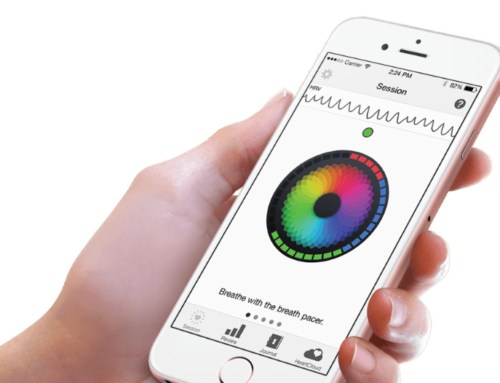 As a yoga therapist and someone who has a close personal connection with eating disorders, I am a strong advocate for the appropriate use of yoga in the treatment and recovery of eating disorders.
As a yoga therapist and someone who has a close personal connection with eating disorders, I am a strong advocate for the appropriate use of yoga in the treatment and recovery of eating disorders.
Yoga is an important part of Walden’s integrative therapies programming and is a process of awakening awareness. The more awareness, the more choice and freedom we have. The more we can explore our choices and freedoms, the more confident we can be in trusting ourselves and creating appropriate boundaries. With that trust, a new or renewed sense of “Self” can awaken.
Time and again, after a guided meditation, a student will look at me with grateful tears in their eyes and a calm, deep understanding in their voice saying: “Thank you, I forgot” or “I feel like I just remembered a part of myself.” I believe what they are describing is the experience of their “Self” being moved. While I have not come across studies on this idea of “Self,” I do believe it is the most powerful gift yoga has to offer – especially for those in eating disorder recovery. I also believe that if we can cultivate our relationships with this part, we are better positioning ourselves to thrive.
What is Yoga?
Most of us associate yoga with the physical postures that we have either seen or practiced. Some know that breath is an important part of practice. What many do not know, is that breath and poses are only two of the 8-limbed path of yoga.
The full 8 limbs include mindfulness practices (the Yamas and Niyamas) that can be observed on the mat and in life – non-harming, truthfulness and surrender are just a few. With the physical and breathing practices, there are a series of steps towards meditation and ultimately enlightenment. These include turning inward, deepening focus and finding effortlessness and bliss.
As important as the actual practices of yoga is the understanding of who we are as humans through the lens of yoga. “Pancha Maya Koshas” refers to the five layers of illusion that are part of being human. The “True Self” in yoga is seen as pure energy and consciousness that we all have the power to connect with at any time (though it may take practice). The five layers include the physical body, the energetic body, the mental body, the witness and the bliss body.
Why Yoga for Eating Disorders?
Teaching those who are in conflict with their physical selves – that there are other aspects of self they can identify with (an energetic body, a witness body and even the pure consciousness of their True Self) – is exceptionally healing. It is often the first step to feeling at home in our physical bodies, and the first step in trusting our feelings and our own unique experiences in the world.
Physically, yoga can be tailored to support digestion, relieve constipation and reduce reactivity around the painful process of refeeding. Emotionally, yoga supports a connection with internal resources so that feelings, needs and longings are grounded. With a design that first “opens” the body through stretching and ends with relaxation, stressful thought patterns that perpetuate eating disorders can often fade (at least temporarily). Sometimes, emotions that have burdened us for years are able to be released during or after a yoga practice.
For some, yoga might feel confrontational. We are asking people to sit in direct experience with their body and breath. For those living with eating disorders, this simple process can feel extremely uncomfortable. For so long, these individuals have experienced turmoil and disconnect between body and mind. For this reason this connection has been altogether avoided. What I encourage to my students during practice, is to push through the discomfort and do their best to stay in this experience. What they will often find a deeper sense of being present (noticing what is happening now as opposed to ruminating thoughts about the past or the future). They may also even find pleasure and acceptance in the body and eventually find the ability to listen to and respect their body’s unique needs or come to feel that their body is whole and capable.
Ultimately, yoga teaches self-compassion and resilience.
What does the research tell us?
Today more and more inpatient and outpatient eating disorder recovery centers are finding qualified yoga teachers to lead specialized classes for their populations. Research has shown the following benefits without negative affect on weight:
- a significant decrease in depression, anxiety and body image disturbance [1]
- lower negative affect before meal times [2]
- Increased use of coping skills and self soothing, feeling of calm, awareness of internal cues and negative self talk, and positive body image [3]
One study compared traditional therapy to traditional therapy combined with yoga. Eating Disorder Examination (EDE) scores decreased over time in the yoga group, whereas the group without yoga showed initial decline but then returned to baseline EDE scores by week 12. [4]
- The participant has to be engaged with the process in order to benefit. They should always have choices within the practice and the practice should be optional.
- There are many styles of yoga; mindful-based restorative programs tend to be the most effective across studies.
- Yoga interventions are most effective when combined with therapy and should not replace traditional treatment and support.
Perhaps one of the most healing elements of yoga is that it does not abide by the outcome-based focus of the western world. Yoga cares little about success – it cares little about your caloric intake, the number on the scale or how others perceive you. Yoga cares about what you are cultivating right now through action and intention. For those struggling with eating disorders, the ability to connect with right now can actually mean freedom!
If you are interested adding yoga to your recovery process, be sure to discuss with your physician and treatment team. Look for specialized yoga therapists or yoga teachers who have been trained in trauma-sensitive or restorative yoga. Remember that recovery is not a straight path no matter what tools you are using. I encourage you to trust yourself, stay focused and find the supports that work best for you. Recovery is possible.
At Walden, we know finding eating disorder treatment can be tough. Walden is here for you. If you are concerned that you, or a loved one, may have an eating disorder, please reach out by completing the form on this page or email us at intake_coordinators@waldenbehavioralcare.com.
 Erin LoPorto, Certified Yoga Therapist, E-RYT 500, holds advanced training in yoga and yoga therapy. She completed a two-year internship at Kripalu Center for Yoga and Health where she was able to study with world leaders in the fields of yoga, Ayurveda, energy healing, meditation and the mind-body connection. She is certified teacher of Kripalu Yoga, PranaFlow and TriYoga Therapy. She has collected over 1000 hours of training in Yoga Therapy. She is also a talented bodyworker; she holds certifications in Reiki I and II, Multi-Dimensional Transformational Healing, Access Bars and Lotus Palm Thai Yoga Massage. Additionally, Erin studied somatic expressive therapy through the Leven Institute and has taken a particular interest in trauma treatment and eating disorder recovery. She has been teaching yoga at Walden Behavioral Care for Eating Disorders since 2013 and Revolution Community Yoga since it first opened in 2012. She also has a private practice at www.erinloporto.com.
Erin LoPorto, Certified Yoga Therapist, E-RYT 500, holds advanced training in yoga and yoga therapy. She completed a two-year internship at Kripalu Center for Yoga and Health where she was able to study with world leaders in the fields of yoga, Ayurveda, energy healing, meditation and the mind-body connection. She is certified teacher of Kripalu Yoga, PranaFlow and TriYoga Therapy. She has collected over 1000 hours of training in Yoga Therapy. She is also a talented bodyworker; she holds certifications in Reiki I and II, Multi-Dimensional Transformational Healing, Access Bars and Lotus Palm Thai Yoga Massage. Additionally, Erin studied somatic expressive therapy through the Leven Institute and has taken a particular interest in trauma treatment and eating disorder recovery. She has been teaching yoga at Walden Behavioral Care for Eating Disorders since 2013 and Revolution Community Yoga since it first opened in 2012. She also has a private practice at www.erinloporto.com.
References:
[1]: Hall, Allison; et al. Use of yoga in outpatient eating disorder treatment: a pilot study. J Eat Disorders. 2016; 4:38[2]Carly R. Pacanowski, Lisa Diers, Ross D. Crosby & Dianne Neumark-Sztainer (2016): Yoga in the treatment of eating disorders within a residential program: A randomized controlled trial, Eating Disorders, DOI: 10.1080/10640266.2016.1237810[3] https://www.emilyprogram.com/blog/discovering-the-role-of-yoga-in-eating-disorder-treatment[4] J Adolesc Health. 2010 Apr;46(4):346-51. doi: 10.1016/j.jadohealth.2009.08.007. Epub 2009 Nov 3.[5]McMahon, Jennifer E., “The Use of Yoga in Eating Disorder Treatment: Practitioners’ Perspectives” (2014). Master of Social Work Clinical Research Papers. Paper 361.






